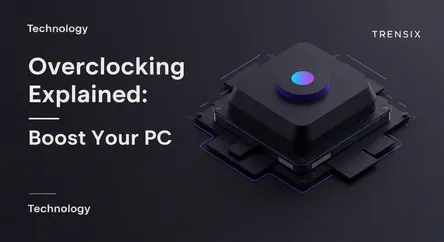Technology
Overclocking Explained: Boost Your PC

Learn what overclocking is and how pushing your PC components beyond factory settings can unlock significant performance gains for gaming and tasks.
What is it?
Overclocking is the practice of increasing a computer component's clock rate, causing it to run at a higher speed than it was originally designed for by the manufacturer. This is most commonly done with the Central Processing Unit (CPU), Graphics Processing Unit (GPU), and system memory (RAM). By manually adjusting settings like the core clock speed and voltage in the system's BIOS/UEFI or through specialized software, users can push their hardware to perform faster and handle more demanding tasks without purchasing new components.
Why is it trending?
Overclocking is a persistent trend among PC enthusiasts, gamers, and creators seeking maximum performance. It allows them to extract extra power from their existing hardware, leading to higher frame rates in games, faster video rendering times, and improved overall system responsiveness. With manufacturers like Intel, AMD, and NVIDIA offering unlocked processors and user-friendly tuning software, the practice has become more accessible than ever. It represents a cost-effective way to get high-end performance from mid-range components, making it a popular hobby in the DIY PC community.
How does it affect people?
For individuals, a successful overclock can significantly enhance their computing experience, providing a snappier and more capable machine. It can extend the useful lifespan of older hardware, delaying the need for costly upgrades. However, it's not without risks. Pushing components beyond their limits generates more heat, requiring better cooling solutions to prevent overheating. It can also lead to system instability or crashes if not done carefully. Furthermore, overclocking typically voids the component's warranty, meaning any damage caused is the user's own responsibility.